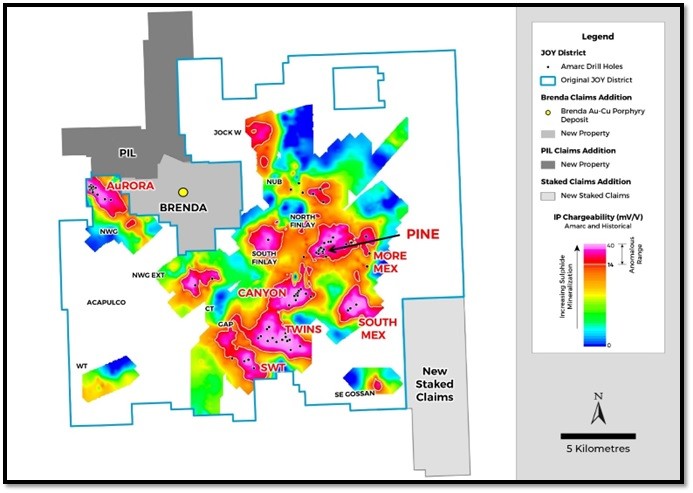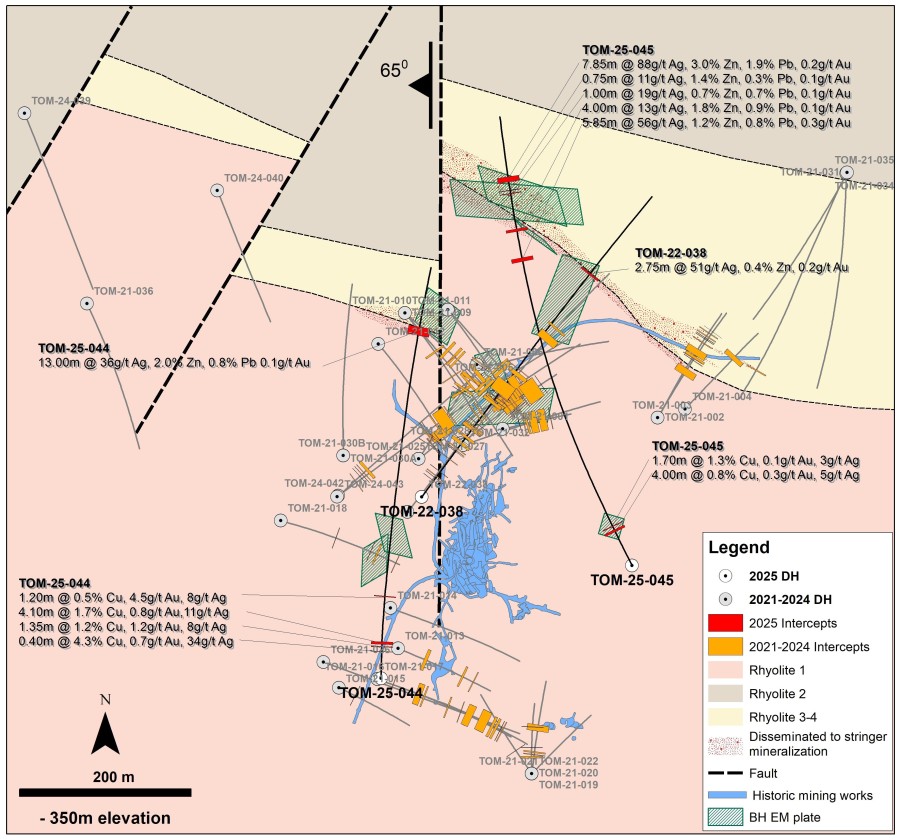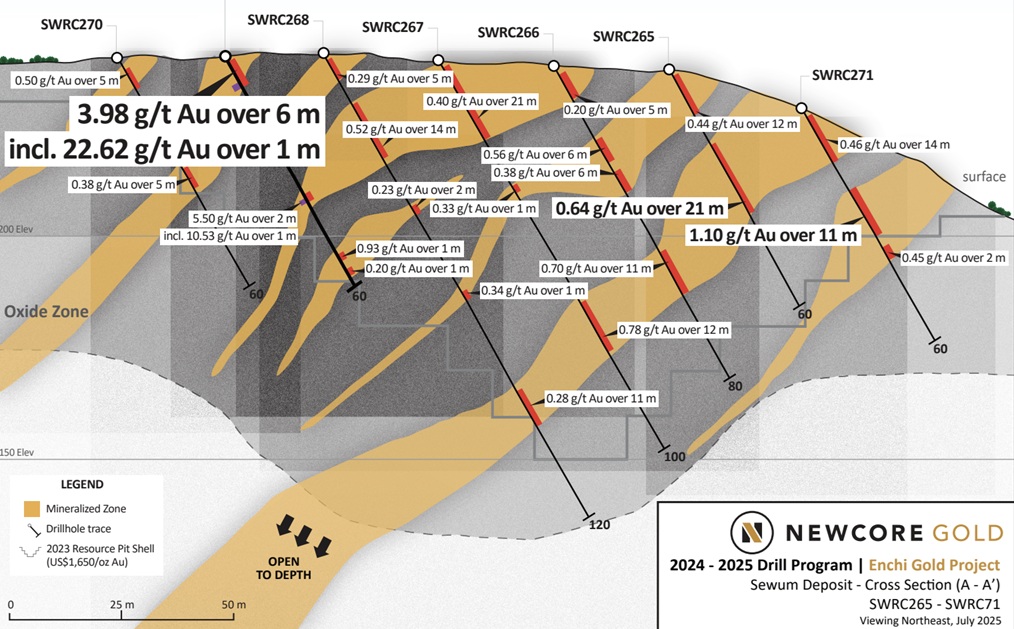Vancouver, British Columbia--(Newsfile Corp. - August 9, 2017) - Jaxon Minerals Inc. (TSXV: JAX) (FSE: 0U3) is pleased to announce that the company has completed its first phase of fieldwork at its silver, zinc, gold Hazelton VMS project, located 50 kilometres north of Smithers, BC in the Skeena Arch.
"We acquired a property with spectacularly high grades of silver and zinc in outcrop at surface, but little in the way of geological mapping, structural modeling, or data continuity necessary to infer mineral potential at scale" said Jason Cubitt, Jaxon's President and CEO, "Now we're confident that with this first phase of field operations we've taken a significant step toward that end."
Carl Swensson, Jaxon's Technical Advisor commented, "Feeder zone mineralisation provides significant additional width to the statiform mineralisation resulting in the potential for good mining widths." Mr. Swensson continues, "The exploration opportunity is to determine the 3D geometry and size potential of the system."
Surface channel sampling at the Max Zone
Channel sampling of host wall rock and discrete veins, breccia and sulphide lenses tested thickness of sulphide zones. Channel widths of up to 5 metres from nine exposures were recorded over a 700 metre surface extent and almost 200 metres of elevation. Jaxon has received assay results from 134 of the 213 individual 1-metre-length channel samples collected in Phase 1.
Selected Highlights from MAX TARGET detailed CHANNEL ROCK SAMPLING 2017
| Channel Name |
Channel Width (m) |
Ag g/t | Zn % | Pb % | Au g/t |
| 742S-801 | 2 | 406 | 5.44 | 1.75 | 0.60 |
| 742S-807 | 3 | 694 | 6.83 | 3.98 | 1.12 |
| Including | 1 | 1,006 | 7.87 | 7.76 | 1.624 |
| 742N-816 | 1 | 143 | 1.67 | 1.27 | 0.30 |
| 742N-822 | 2 | 304 | 5.32 | 3.94 | 1.11 |
| 740-853 | 5 | 162 | 4.57 | 1.23 | 0.26 |
| 2 | 288 | 11.59 | 11.50 | 2.96 | |
| 724-945 | 1 | 120 | 3.10 | 8.29 | 0.66 |
| 724-949 | 1 | 244 | 4.85 | 6.41 | 0.69 |
| 705-926 | 2 | 166 | 9.11 | 1.23 | 0.39 |
| 705-933 | 2 | 295 | 22.02 | 3.61 | 0.81 |
| 685-901 | 1 | 780 | 2.00 | 3.69 | 0.94 |
| 680-906 | 2 | 408 | 0.26 | 0.74 | 0.62 |
| 680-914 | 1 | 231 | 1.71 | 1.53 | 0.02 |
| 1 | 172 | 5.78 | 3.04 | 0.01 | |
| 550-839 | 2 | 262 | 6.57 | 2.30 | 1.5 |
Structural Interpretation at the Max Zone
Jaxon retained the services of John Bernt, a structural geologist, to conduct detailed mapping and structural interpretations of the exposures of wall rocks and sulphide mineralization present in the various zones (742m elevation downslope to 550 meters elevation). The excellent visual examination of the system in outcrop is possible because the intense carbonate alteration in wall rocks and massive sulphides has preserved the primary textures within these high grade precious and base metal zones.
New Showings and exploration beyond the Max target Phase One
Jaxon's prospecting teams have expanded our knowledge of the potential outside of the immediate focus of the Max massive sulphide zones. The previous extensive soil grid of 2,800 samples spread over a 1-kilometre by 3-kilometer grid and the recently obtained Mag-VTEM survey produced significant anomalous targets which had never before been identified.
Induced Polarization Survey
Jaxon's detailed 3D Induced Polarization (IP) survey of the Max target will build upon the surficial mapping observations and channel sampling program. Survey testing of the Max target sulphide zone exposures is expected to be complete within one week. Due to the high pyritic content of the base metal and silver bearing sulphosalt mineralization in all 9 exposed zones it is expected that both high chargeability and low resistivity IP survey response will add to Jaxon's understanding of continuity, strike lengths and widths of the various zones. The final interpretation of the Phase Two IP will lead to drill target selection for a Phase Three campaign.
Sample Preparation and Analytical Method
The one-metre rock channel samples were collected after they were microblasted up to a depth of 15 cm. The 20 kg (approx) one-metre sections were placed in 20 x 24 inch bags and labelled. Samples were transported to the Smithers field office. All samples were then crushed to <3/4 inch in size using a rock crusher. The crushed material was passed through a cone splitter to produce 1 to 1.5 kg sample that was sent for analysis. Rejects are stored in a locked container for future analysis.
All samples were then shipped to MS Analytical of Langley, British Columbia, where they underwent 39 Multi-Element, 20 g Aqua Regia ICP-AES/MS Ultra Trace Level Analyses (Code IMS-117). Over-limits were re-assayed using Multi-Element 4-Acid, ICP-AES, Ore Grade analysis (Code ICP-240), and for select samples an Ag Fire Assay 30 g Gravimetric Fusion (Code FAS-418).
This new release has been reviewed by Derrick Strickland, P.Geo. (a qualified person for the purpose of National Instrument 43-101, standards and disclosure for mineral projects.)
About Jaxon
Jaxon is a base and precious metals exploration company with a regional focus on Western Canada. The company is currently focused on advancing its Hazelton Project in north-central British Columbia and the Wishbone/Foremore property in BC's Golden Triangle.





